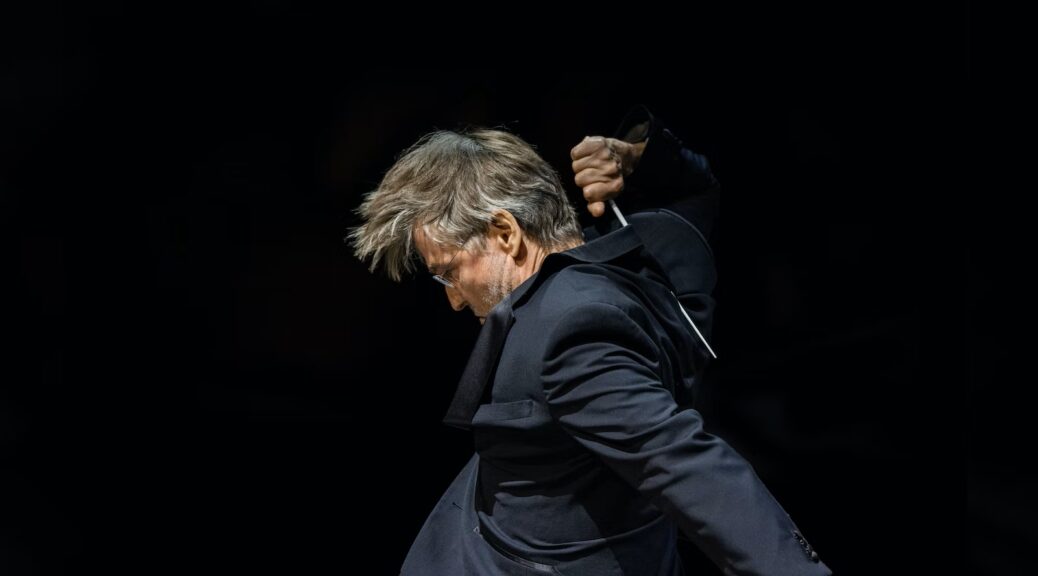
ADAMS’ METAMORPHOSIS
The timely world-premiere composition by Samuel Adams, which made an agreeable debut with the S.F. Symphony, calls for a detailed essay about the creative process, yet to be written. Because in trying to depict a sunset of our lingering pandemic, Adams revised and reworked his half-hour long opus “No Such Spring” numerous times, adding even a pianist in a prominent new concerto-like post down stage, as current events unfolded. His portrayal of the metamorphosis might be even more interesting to devour than the music itself.
Sam, of the famous Adams musical family, interpreted a real-life return to normalcy with this orchestral premiere, to mark the hoped-for end of separation and isolation after our three challenging years. Call it a nonfiction concertante work.
His tripartite orchestral suite marked a major-stage debut for the 37-year-old who grew up not even a bridge away from the S.F. Symphony itself.
While the violinists down front may have played 300-year-old instruments, Adams’ electronic addendum matched that in its own way with an analog Moog synthesizer making discreet quirky background sounds, recalling electronics from the electronic stone age of the 1960s. And the large orchestra helped further, with a dozen or so uncommon percussion instruments (cabasa, any one? Crotales? Guiro?) plus paired harps, tuba, contrabassoon, etc. Clearly, Adams is enamored of broadened sonic diversity, even citing the cracking of ice on the pond in Thoreau’s “Walden.” Another Adams relevance came from listening to Stravinsky’s “Rite of Spring” while Ukraine was being invaded. Spring too can offer highly dissimilar impressions.
Adams’ springing literally into main-stage action I would term an understated orchestral work with a low-key piano obbligato. The 37-year-old San Franciscan’s ambitious overreach brought in a big fugue and a variations segment, plus a finale of “Garden of Wire and Sound” that he called “almost a cocoon,” with keyboard waves emanating to the orchestra to glow like a halo. His “Garden” starts with one-finger tranquil wanderings on the keyboard, concluding with a curious repeated tone on the piano’s highest note, as much wood as it is piano wire.
Throughout, the piano (played by Conor Hanick) is far more a linkage with orchestra than a leader or show-off. Even if a few tone clusters peer out, there is neither cadenza nor virtuoso dazzle. The keyboard stamps this as a thoroughly laid-back work, rich in variety but toned-down in complexities, arguably belonging somewhere within the orchestra, not spotlighted down stage.
Adams’ middle movement adds brass fanfares distinctly from the jazz world, stamping the half-hour piece as unmistakably American.
One suspects Adams may add a fourth movement as a finale eventually, because his low-key ending leads one to ask, When will this grand opus really get started, shifting out of its lower gears? Clearly, Adams is gifted and rich in executing his ideas, but he lacks a resounding, memorable finale, sharing a facet with Tchaikovsky’s deceptive Sixth Symphony: a fadeout ending.
Music Director Esa-Pekka Salonen led both this and Bruckner’s splashy late-romantic Symphony No. 6, displaying and harnessing that exemplary augmented and headline-worthy SFS brass section. At 54 minutes, the Sixth qualifies as one of Bruckner’s shorter symphonies.
MUSIC NOTES—Samuel Adams is the son of the renowned Berkeley composer John Adams, following in the wake of other parent-offspring composers like the Couperins, the Wagners, the Mozarts, the Strausses, and, above all, the Bachs….The Bruckner Sixth was first heard here at the SFS in 1970, under direction of music director Josef Krips, 68, shortly before his retirement. Krips had significantly introduced the symphonies of fellow Viennese Mahler and Bruckner to local audiences, year by year—most of them local debuts—but health prevented carrying out the whole mission.
SAN FRANCISCO SYMPHONY, in Samuel Adams’ world premiere and Bruckner Sixth, under Music Director Esa-Pekka Salonen, Feb. 23-26, Davies Hall, S.F. For info: (415) 864-6000, or go online, www.sfsymphony.org.